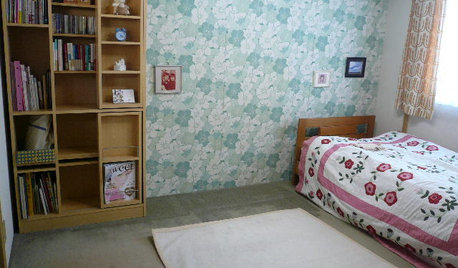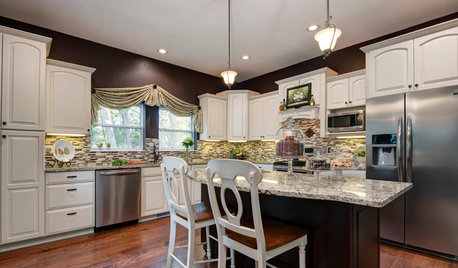Getting good results
Steveningen
16 years ago
Related Stories

COLORSpeed-Dial Color Selection to Get the Best Result
You’ve belabored your color decisions and are still stuck. Here is how to evaluate your space and make choices that are right for you
Full Story
WORKING WITH PROSWant the Best Results? Join Your Design Team
Take a leading role in your home project to help the process go more smoothly and get what you really want
Full Story
BOOKSCan Tidying Up Result in Life-Changing Magic?
Organizing phenom Marie Kondo promises big results — if you embrace enormous changes and tough choices
Full Story
REMODELING GUIDESHouzz Survey Results: Remodeling Likely to Trump Selling in 2014
Most homeowners say they’re staying put for now, and investing in features to help them live better and love their homes more
Full Story
RANCH HOMESHouzz Tour: Ranch House Changes Yield Big Results
An architect helps homeowners add features, including a new kitchen, that make their Minnesota home feel just right
Full Story
KITCHEN DESIGNSurvey Results: Kitchen Trends That Seem Here to Stay
More than a third of respondents in Houzz’s annual kitchen trends report now have the means to remodel. Here’s what else they told us
Full Story
HOUZZ TOURSHouzz Tour: Battling the Tides Results in a Wondrous House on the Water
A complex construction effort pays off big-time with unobstructed views of Blue Hill Bay in Maine
Full Story
BASEMENTSBasement of the Week: Smart Cost Cutting, Beautiful Results
A stylish multipurpose basement for less than half the usual cost? See the budget-saving tricks that helped this underground space
Full Story
INSIDE HOUZZSee the Results: The Houzz/Lowe’s Dream Kitchen Sweepstakes
An interior designer and products from Lowe’s help this homeowner fulfill a kitchen dream
Full Story
FARM YOUR YARDHow to Get Good Soil for Your Edible Garden
The nutrients in your soil feed the plants that feed you. Here are tips on getting it right — just in time for planting season
Full StorySponsored



lavendrfem
Vikki1747
Related Discussions
dangsr reply: Rotted Oak Leaf mix
Q
Good instant fertalizer
Q
How heavy can you load your Miele dishwasher?
Q
Condiment cookoff/cookalong/challenge
Q
lindakimy
threeorangeboys
debbieca
muffiejane
memo3
angelcub
sierra_z2b
irene_dsc
dodgerdudette
muffiejane
SteveningenOriginal Author
Nell Jean
fammsimm
threeorangeboys
aftermidnight Zone7b B.C. Canada
Eduarda
madhabitz
madhabitz
katherineinsfbay
madhabitz
patricianat
katherineinsfbay
todancewithwolves
timetogrowthegarden
dodgerdudette
madhabitz
timetogrowthegarden